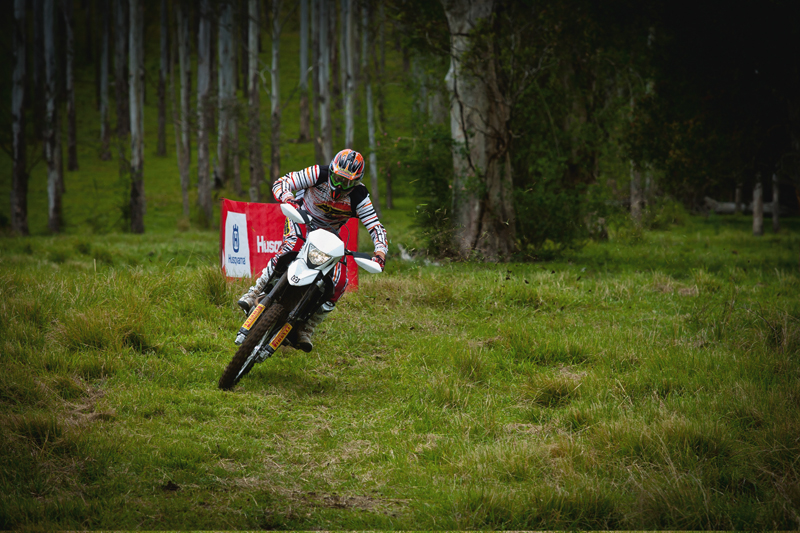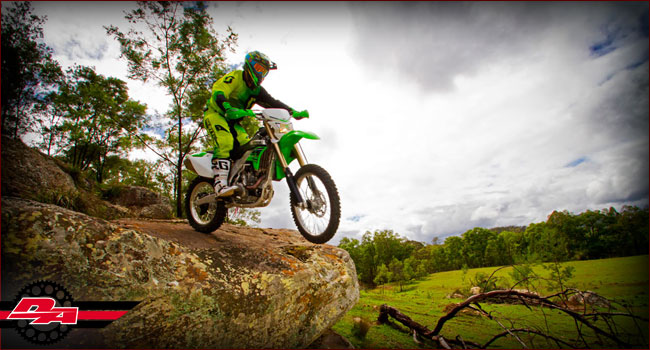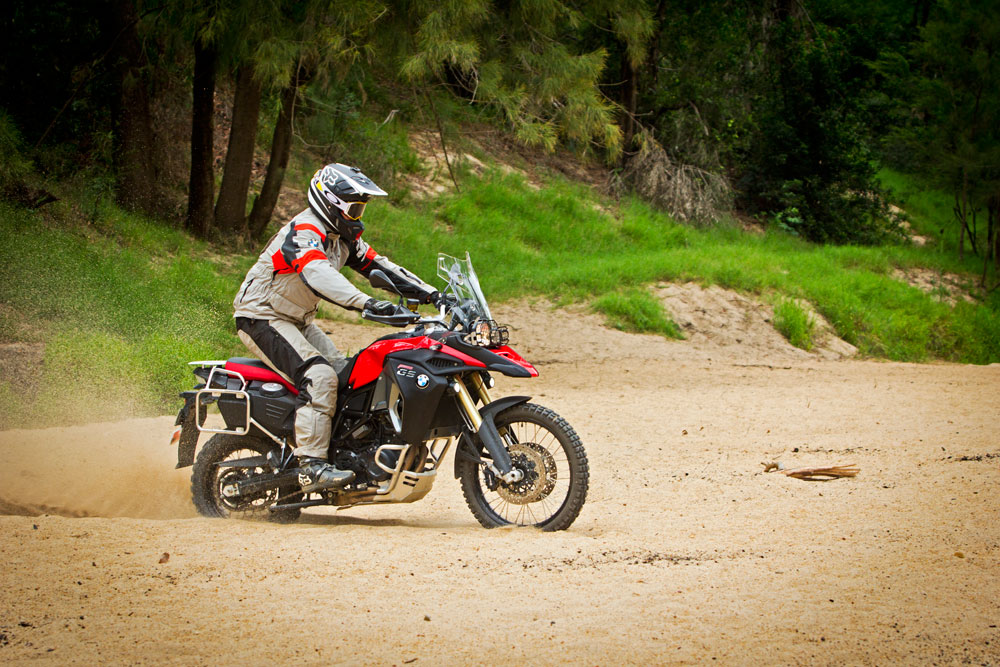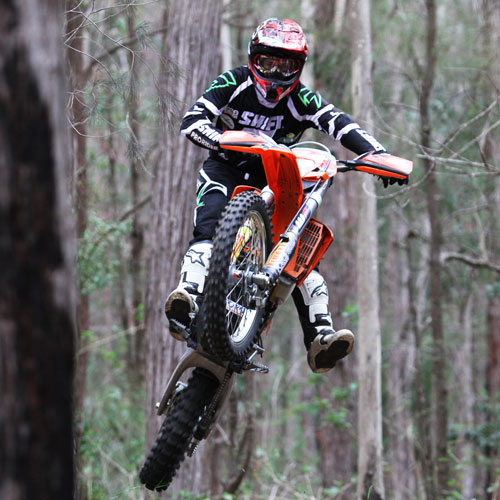
LINE SELECTION
It’s important when riding a track like a grass track to have your lines sorted. Picture the circuit as a big road race track: there are no jumps, minimal obstacles and keeping your momentum is very important, not only for racing but also to have the most fun on the track.
You want to enter the turn from the outside and finish your braking before you enter the bend. Once you’re comfortable with riding grass tracks, you’ll be able to push your breaking later and later into the turn and start to arc your line into the turn while still braking. Apex the turn right at the tightest line available and this will allow you to drift out and keep plenty of momentum as you enter the following straight. Be aware of what way the next turn goes so that you can set up for it in a similar manner. If you’re racing, you will need be aware of people around you. You can’t just go cutting from one side to the other when there are riders all around you — it will end in tears.
Once lines form, try and find the smoothest line that will set you up best for the next turn and allow you to keep the most momentum possible. If you’re riding for the fun factor, keep your eye out for big loam berms that start to push up on the outside of the turns. As the grass gets worn away, the dirt pushes to the outside of the turn, creating a nice, thick loam berm ready to be demolished. These berms often sap power from 250s and, although they look fun and fast, are slower than a tight inside line on a small-bore bike.
FLAT TURNING
As most turns on a grass track are flat turns, it’s important to have your body position correct. You want to weight the outside of the bike when you’re sitting and standing and turning. As you can see in this photo of Scott Bishop, the bike is lying over but his weight is still weighting the outside of the bike. If he was to lean over with the bike at this point, he would be struggling with the bike sliding out.
When you’re sitting, keep your bum crack on the outside of the seat and push your weight through the outside peg. Keeping your elbow high and pointed will allow you to turn the throttle properly when turning left. Try and keep a nice constant throttle all the way around the turn, winding it on smoothly as you make your way around the turn. Snapping the throttle and fanging the clutch will sound cool but you’ll be breaking traction and often the bike will grab a bit of traction and spit you off the line you want to be on, or break traction and slide you onto your butt. As ruts form, a completely different riding technique is required; check out page 154 for a full run-down on how to ride ruts with ease.
MUST-HAVES
Grass tracks are often very hard on brakes. So be aware that you may experience some fading due to the high speeds you’re stopping from on a regular basis. A braided brake line and sintered pads will help with this.
Most tracks are best suited to a soft-compound tyre such as the Pirelli Mid-Soft and handguards are a must. Once the grass starts to rip up, there are often rocks that get brought to the surface and sitting behind a 450 down a straight being peppered with roost hurts. A roost guard is important, too, for the same reason; even wearing two jerseys is a good idea as it will help protect your biceps and forearms where a roost protector won’t.
WHERE TO PASS
Most riders are pretty competent at going fast in a straight line and you will probably struggle to get a pass done down a straight. The best place to pass your mates or competitors on a grass track is under brakes. Work on your braking technique and be prepared to come in hot and you’ll often get the job done. Especially with the race line usually forming to the outside of the turn, a heavy braking move to the inside can prove a winner.




